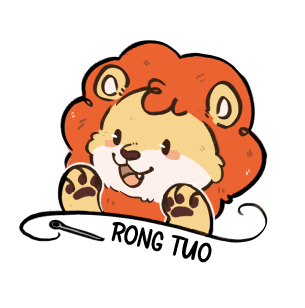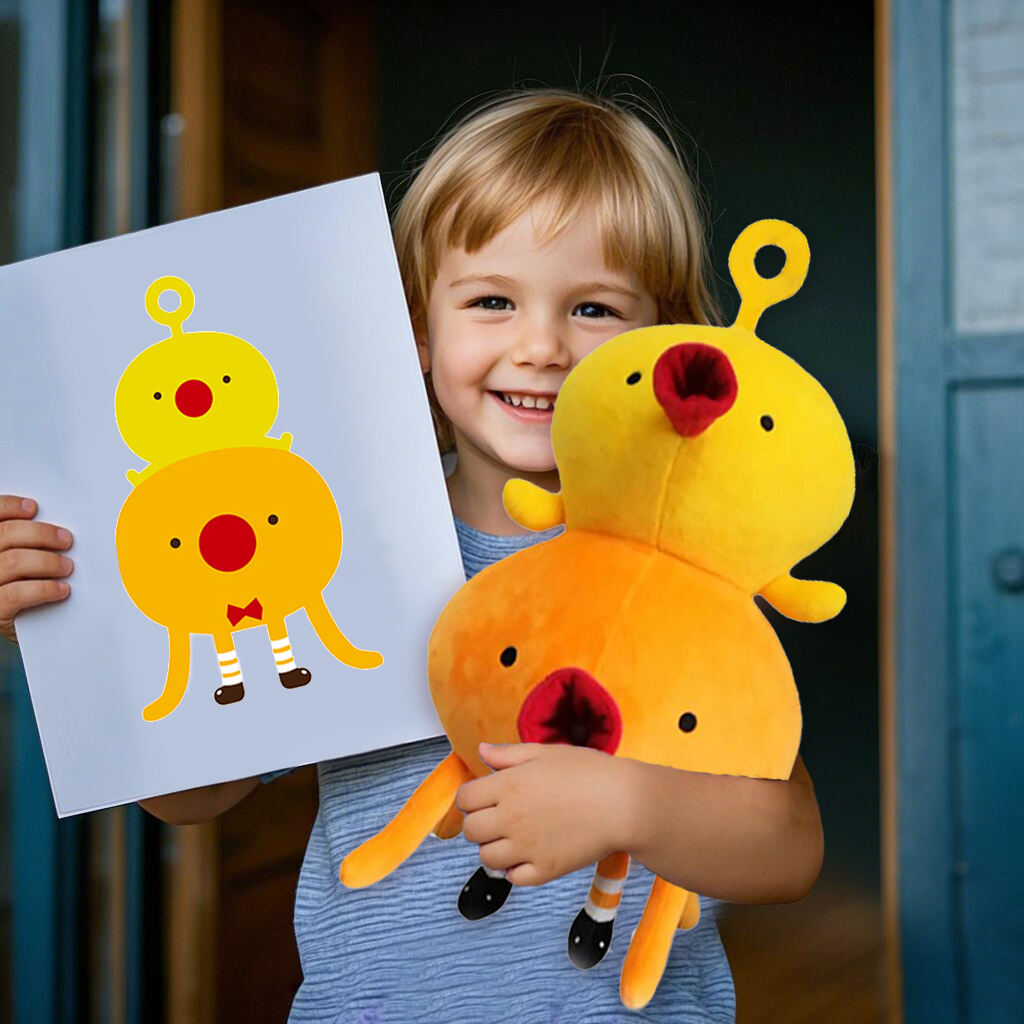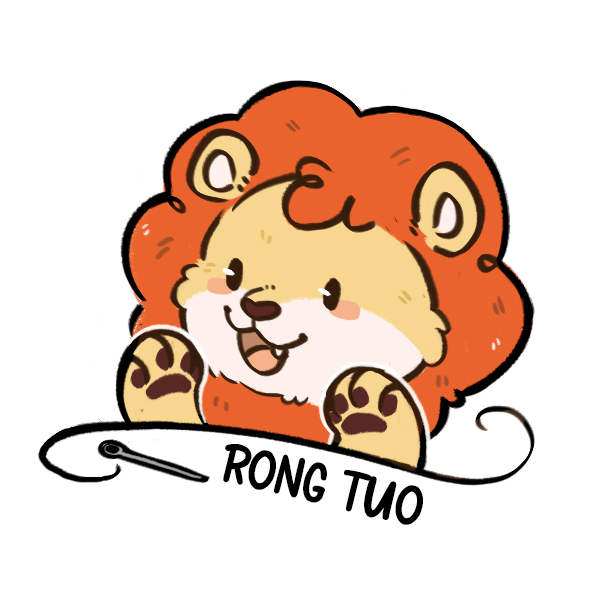Ang mga custom na tagagawa ng plush ay may mahalagang papel sa pagtiyak ng kaligtasan ng mga laruan ng mga bata. Nakakamit nila ito sa pamamagitan ng maingat na pagpili ng mga materyales at pagsunod sa mahigpit na mga kasanayan sa produksyon. Pinoprotektahan ng mga ligtas na plush toy ang mga bata mula sa mga potensyal na panganib, tulad ng pagkabulol o mga reaksiyong alerhiya. Bilang isang magulang o tagapag-alaga, gusto mo ng kapayapaan ng isip dahil alam mong ang mga laruang nilalaro ng iyong anak ay nakakatugon sa pinakamataas na pamantayan sa kaligtasan. Nauunawaan ng mga tagagawa ang responsibilidad na ito at inuuna ang kaligtasan ng bata sa bawat yugto ng produksyon.
Pagpili ng Materyal para sa Ligtas na Plush Toys
Ang mga materyales na ginamit sa mga plush na laruan ay direktang nakakaapekto sa kanilang kaligtasan at kalidad. Bilang isang magulang o tagapag-alaga, dapat mong malaman kung paano pinipili ng mga tagagawa ang mga materyales upang matiyak na ang mga laruan ay ligtas para sa mga bata. Nakatuon ang mga custom na tagagawa ng plush sa pagpili ng mga materyales na nakakatugon sa mga mahigpit na pamantayan sa kaligtasan at nagbibigay ng pangmatagalang tibay.
Mga Non-Toxic at Hypoallergenic na Materyal
Ang mga bata ay madalas na nakikipag-ugnayan nang malapit sa mga malalambot na laruan, na ginagawang mahalaga ang kaligtasan ng materyal. Ang mga tagagawa ay inuuna ang mga hindi nakakalason na materyales upang maalis ang mga panganib mula sa mga nakakapinsalang kemikal. Ang mga materyales na ito ay sumasailalim sa mahigpit na pagsusuri upang matiyak na hindi sila naglalaman ng mga sangkap tulad ng lead, phthalates, o iba pang mga mapanganib na sangkap.
Ang mga hypoallergenic na tela ay gumaganap din ng mahalagang papel sa pagprotekta sa mga bata na may sensitibong balat o allergy. Ang mga plush toy na ginawa gamit ang mga materyales na ito ay nagbabawas sa mga pagkakataon ng pangangati ng balat o mga reaksiyong alerhiya. Halimbawa, ang mga organic na cotton at polyester blend ay karaniwang mga pagpipilian dahil malambot, ligtas, at banayad ang mga ito sa balat. Kapag pumili ka ng mga laruang gawa sa mga materyales na ito, maaari kang magkaroon ng kumpiyansa tungkol sa kaligtasan ng iyong anak.
Katatagan at Paglaban sa Pagkasira
Ang mga bata ay madalas na napapailalim sa kanilang mga laruan sa magaspang na paghawak, tulad ng paghila, pagnguya, o paghagis. Tinitiyak ng mga matibay na materyales na ang mga plush na laruan ay makatiis sa ganitong uri ng paggamit nang hindi nalalagas. Pinipigilan ng mataas na kalidad na tahi at reinforced seam ang maliliit na bahagi, tulad ng palaman o mga butones, na matanggal at maging mga panganib na mabulunan.
Sinusubukan ng mga custom na tagagawa ng plush ang tibay ng kanilang MGA PRODUKTO sa pamamagitan ng pagtulad sa real-world na paggamit. Tinatasa nila kung gaano kahusay ang mga materyales sa ilalim ng stress, tinitiyak na ang mga laruan ay mananatiling ligtas at buo sa paglipas ng panahon. Kapag namuhunan ka sa isang plush toy na gawa sa matibay na materyales, mababawasan mo ang panganib ng mga aksidente at pinahaba ang habang-buhay ng laruan.
Pagsunod sa Pandaigdigang Regulasyon sa Kaligtasan ng Bata
Ang mga custom na tagagawa ng plush ay dapat sumunod sa mga pandaigdigang regulasyon sa kaligtasan upang matiyak na ang kanilang mga laruan ay nakakatugon sa pinakamataas na pamantayan. Pinoprotektahan ng mga regulasyong ito ang mga bata mula sa mga potensyal na panganib at nagbibigay sa iyo ng kumpiyansa sa kaligtasan ng mga produktong binibili mo. Ang pag-unawa sa mga pamantayang ito ay nakakatulong sa iyong gumawa ng matalinong mga desisyon kapag pumipili ng mga plush toy para sa iyong anak.
Mga Pangunahing Pamantayan para sa Mga Plush Toy (hal., CPSIA, EN71)
Ang mga plush toy ay dapat sumunod sa mga tiyak na pamantayan sa kaligtasan upang ituring na ligtas para sa mga bata. Sa United States, ang Consumer Product Safety Improvement Act (CPSIA) ay nagtatakda ng mahigpit na mga alituntunin para sa kaligtasan ng laruan. Ang batas na ito ay nag-aatas sa mga tagagawa na subukan ang mga nakakapinsalang sangkap tulad ng lead at phthalates. Tinitiyak din nito na ang mga laruan ay nakakatugon sa mga kinakailangan sa mekanikal at pisikal na kaligtasan, tulad ng pagpigil sa mga panganib na mabulunan.
Sa Europa, ang pamantayan ng EN71 ay namamahala sa kaligtasan ng laruan. Nakatuon ang regulasyong ito sa mga panganib sa kemikal, mekanikal, at flammability. Halimbawa, tinitiyak nito na ang mga plush na laruan ay hindi naglalaman ng mga nakakalason na tina o mga materyales na maaaring makapinsala sa mga bata. Sa pamamagitan ng pagsunod sa mga pamantayang ito, gumagawa ang mga tagagawa ng mga produkto na nakakatugon sa mga inaasahan sa kaligtasan ng mga magulang sa buong mundo.
Kapag nakakita ka ng mga label na nagsasaad ng pagsunod sa CPSIA o EN71, maaari kang magtiwala na ang laruan ay sumailalim sa mahigpit na pagsubok. Ang mga sertipikasyong ito ay nagsisilbing garantiya na ang produkto ay nakakatugon sa mahahalagang pamantayan sa kaligtasan.
Mga Proseso ng Sertipikasyon at Pagsubok
Ang mga custom na tagagawa ng plush ay gumagamit ng mga proseso ng sertipikasyon at pagsubok upang i-verify ang kaligtasan ng kanilang mga produkto. Ang mga hakbang na ito ay nagsasangkot ng maraming yugto ng pagsusuri upang matiyak ang pagsunod sa mga pandaigdigang regulasyon. Una, sinusuri ng mga tagagawa ang mga hilaw na materyales upang kumpirmahin na sila ay libre sa mga nakakapinsalang kemikal. Tinitiyak ng hakbang na ito na ligtas ang bawat bahagi ng laruan bago magsimula ang produksyon.
Susunod, ang mga tagagawa ay nagsasagawa ng pisikal at mekanikal na mga pagsubok sa tapos na produkto. Sinusuri ng mga pagsubok na ito kung may mga panganib na mabulunan, matutulis na gilid, at tibay sa ilalim ng stress. Halimbawa, tinitiyak ng mga pull test na ang maliliit na bahagi tulad ng mga button o mata ay mananatiling ligtas na nakakabit. Kinukumpirma rin ng mga pagsusuri sa flammability na ang laruan ay hindi nagdudulot ng panganib sa sunog.
Matapos makumpleto ang mga pagsusuring ito, kumukuha ang mga tagagawa ng mga sertipikasyon upang ipakita ang pagsunod sa mga pamantayan sa kaligtasan. Ang mga sertipikasyong ito, gaya ng Produktong Pambata Certificate (CPC) sa U.S., ay nagbibigay ng patunay na ang laruan ay nakakatugon sa mga legal na kinakailangan. Kapag bumili ka ng isang sertipikadong plush toy, maaari kang magkaroon ng kumpiyansa sa kaligtasan at kalidad nito.
Sa pamamagitan ng pag-unawa sa mga prosesong ito, maa-appreciate mo ang pagsisikap na ginawa ng mga custom na plush na manufacturer sa paggawa ng mga ligtas na laruan. Tinitiyak ng kanilang pangako sa pagtugon sa mga pandaigdigang regulasyon sa kaligtasan na masisiyahan ang iyong anak sa kanilang mga malalambot na laruan nang walang panganib.
Mga Panukala sa Pagkontrol sa Kalidad ng Mga Custom na Tagagawa ng Plush
Ang mga custom na tagagawa ng plush ay nagpapatupad ng mahigpit na mga hakbang sa pagkontrol sa kalidad upang matiyak na ang kanilang mga produkto ay nakakatugon sa pinakamataas na pamantayan sa kaligtasan at pagiging maaasahan. Nakatuon ang mga hakbang na ito sa pagtukoy ng mga potensyal na panganib at pagpapanatili ng pare-pareho sa bawat laruang ginawa. Sa pamamagitan ng pag-unawa sa mga prosesong ito, maaari kang magkaroon ng kumpiyansa tungkol sa kaligtasan ng mga plush toy na pipiliin mo para sa iyong anak.
Pagsusuri at Inspeksyon sa Pisikal na Kaligtasan
Ang pisikal na pagsusuri sa kaligtasan ay gumaganap ng isang mahalagang papel sa pagtiyak na ang mga plush na laruan ay ligtas para sa mga bata. Isinasagawa ng mga tagagawa ang mga pagsusuring ito upang matukoy ang mga panganib tulad ng mga panganib na mabulunan, matutulis na gilid, o maluwag na bahagi. Halimbawa, sinusuri ng mga pull test ang lakas ng mga attachment tulad ng mga button, mata, o mga elementong pampalamuti. Tinitiyak ng mga pagsubok na ito na ang maliliit na bahagi ay mananatiling ligtas na nakakabit, kahit na sa ilalim ng stress.
Ang mga inspeksyon sa panahon ng produksyon ay nakakatulong na matukoy ang mga isyu nang maaga. Sinusuri ng mga tagagawa ang bawat laruan para sa mga depekto, tulad ng mahinang tahi o nakalantad na palaman, na maaaring magdulot ng mga panganib sa mga bata. Sinusuri din nila ang flammability upang makumpirma na ang mga materyales na ginamit sa laruan ay hindi madaling masunog. Ang mga inspeksyon na ito ay nagbibigay ng karagdagang layer ng kaligtasan, na tinitiyak na ang bawat laruan ay nakakatugon sa mahigpit na pamantayan sa kaligtasan bago ito umabot sa iyong mga kamay.
Mga Panghuling Pagsusuri upang Matiyak ang Pagkakatugma ng Produkto
Ang pagkakapare-pareho sa produksyon ay nagsisiguro na ang bawat plush toy ay nakakatugon sa parehong mataas na pamantayan. Ang mga tagagawa ay nagsasagawa ng mga panghuling pagsusuri upang i-verify na ang bawat laruan ay tumutugma sa naaprubahang disenyo at mga detalye. Kasama sa mga pagsusuring ito ang pagsusuri sa laki, hugis, at hitsura ng laruan upang matiyak ang pagkakapareho sa buong batch.
Sa yugtong ito, kinumpirma din ng mga tagagawa na ang mga laruan ay sumusunod sa lahat ng mga sertipikasyon at regulasyon sa kaligtasan. Sinusuri nila ang mga resulta ng mga nakaraang pagsubok at inspeksyon upang matiyak na walang mga hakbang na napalampas. Tinitiyak ng masusing prosesong ito na ang mga plush toy na binili mo ay hindi lamang ligtas kundi maaasahan at matibay din.
Sa pamamagitan ng pagbibigay-priyoridad sa pagkontrol sa kalidad, ipinapakita ng mga custom na plush na manufacturer ang kanilang pangako sa kaligtasan ng bata. Tinitiyak ng mga hakbang na ito na ang mga laruang dala mo bahay ay walang mga depekto at nakakatugon sa pinakamataas na pamantayan ng kaligtasan at kalidad.
Ang Kahalagahan ng Wastong Pag-label
Ang wastong pag-label ay gumaganap ng isang mahalagang papel sa pagtiyak ng kaligtasan at kakayahang magamit ng mga plush na laruan. Ang mga label ay nagbibigay ng mahahalagang impormasyon na makakatulong sa iyong gumawa ng matalinong mga pagpapasya tungkol sa mga laruang pipiliin mo para sa iyong anak. Naiintindihan ng mga custom na tagagawa ng plush ang kahalagahan ng malinaw at tumpak na pag-label, dahil direktang nakakaapekto ito sa kaligtasan at kasiyahan ng kanilang mga produkto.
Mga Babala sa Edad at Mga Tagubilin sa Kaligtasan
Ang mga babala sa edad sa mga plush toy ay nakakatulong sa iyo na matukoy kung ang isang laruan ay angkop para sa iyong anak. Ang mga babalang ito ay batay sa mga alituntunin sa kaligtasan na isinasaalang-alang ang mga salik tulad ng mga panganib na mabulunan, maliliit na bahagi, o kaligtasan ng materyal. Halimbawa, maaaring ipahiwatig ng isang label na ang isang laruan ay hindi angkop para sa mga batang wala pang tatlong taong gulang dahil sa maliliit na nababakas na bahagi. Sa pamamagitan ng pagbibigay pansin sa mga babalang ito, maiiwasan mong bigyan ang iyong anak ng laruan na maaaring magdulot ng panganib.
Ang mga tagubilin sa kaligtasan ay gagabay din sa iyo kung paano gamitin ang laruan nang ligtas. Maaaring kasama sa mga tagubiling ito ang mga babala tungkol sa pag-iwas sa laruan mula sa bukas na apoy o pagtiyak na ang maliliit na bahagi ay mananatiling buo. Ang pagsunod sa mga alituntuning ito ay binabawasan ang posibilidad ng mga aksidente at tinitiyak na ang laruan ay nananatiling ligtas para sa iyong anak.
Mga Alituntunin sa Pangangalaga at Pagpapanatili
Tinutulungan ka ng mga alituntunin sa pangangalaga at pagpapanatili na panatilihing malinis at nasa mabuting kondisyon ang mga malalambot na laruan. Kadalasang kasama sa mga tagubiling ito ang mga detalye tungkol sa mga paraan ng paghuhugas, mga diskarte sa pagpapatuyo, at mga rekomendasyon sa pag-iimbak. Halimbawa, ang ilang mga plush na laruan ay maaaring mangailangan ng paghuhugas ng kamay gamit ang banayad na sabon, habang ang iba ay maaaring hugasan sa makina. Pinipigilan ng wastong paglilinis ang pagtatayo ng dumi, bakterya, o allergens, na tinitiyak na ang laruan ay nananatiling ligtas para sa iyong anak.
Itinatampok din ng mga alituntunin sa pagpapanatili ang mga hakbang upang suriin kung may pagkasira. Ang regular na pag-inspeksyon sa mga tahi, butones, o iba pang bahagi ay nakakatulong sa iyo na matukoy nang maaga ang mga potensyal na panganib. Kung mapapansin mo ang mga maluwag na bahagi o sirang bahagi, maaari mong ayusin o palitan ang laruan upang mapanatili ang kaligtasan nito. Sa pamamagitan ng pagsunod sa mga tip sa pangangalaga na ito, pinahaba mo ang habang-buhay ng laruan at tinitiyak na patuloy itong nakakatugon sa mga pamantayan sa kaligtasan.
Tinitiyak ng mga custom na tagagawa ng plush ang kaligtasan ng bata sa pamamagitan ng pagtutok sa mahahalagang kasanayan. Gumagamit sila ng mga ligtas na materyales na nakakatugon sa mga mahigpit na pamantayan, na binabawasan ang mga panganib tulad ng mga allergy o pagkakalantad sa kemikal. Sumusunod sila sa mga pandaigdigang regulasyon, tinitiyak na ang bawat laruan ay pumasa sa mahigpit na pagsubok. Ang mga hakbang sa pagkontrol sa kalidad ay ginagarantiyahan ang pagkakapare-pareho at inaalis ang mga potensyal na panganib. Ang wastong pag-label ay nagbibigay sa iyo ng malinaw na mga tagubilin at babala, na tumutulong sa iyong gumawa ng matalinong mga pagpipilian. Sa pamamagitan ng pagbibigay-priyoridad sa mga hakbang na ito, ang mga manufacturer ay naghahatid ng mga plush toy na parehong ligtas at maaasahan. Maaari mong pagkatiwalaan ang mga pagsisikap na ito na protektahan ang kapakanan ng iyong anak habang nag-aalok ng kapayapaan ng isip.


